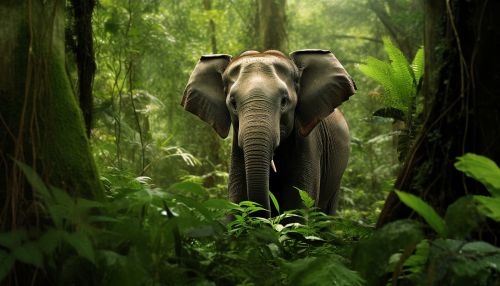Pygmy Elephant
Introduction
The Pygmy Elephant is a subspecies of the Asian Elephant that inhabits the dense forests of Borneo and Sumatra. These elephants are the smallest of all elephant species and are known for their gentle-natured and sociable behavior. They are distinguished by their smaller size, larger ears, and longer tails, which almost touch the ground.


Taxonomy and Evolution
Pygmy Elephants are classified under the genus Elephas and species Elephas maximus, with the subspecies name Elephas maximus borneensis. The classification of Pygmy Elephants has been a subject of debate among zoologists and geneticists. Initially, they were thought to be a population of the Asian Elephant that had decreased in size over generations due to their isolated environment. However, recent genetic studies have suggested that the Pygmy Elephant is a distinct subspecies.
Physical Characteristics
Pygmy Elephants are significantly smaller than their African and Asian counterparts. Adult males typically reach a shoulder height of 2.5 to 3 meters, while females are slightly smaller. Despite their smaller size, they have larger ears and longer tails, which almost touch the ground. Their skin color ranges from grey to brown, with patches of depigmentation on the ears, face, trunk, and belly.
Habitat and Distribution
The Pygmy Elephant is native to the island of Borneo, with the majority of the population found in the Malaysian state of Sabah and the Indonesian province of East Kalimantan. They inhabit dense lowland rainforests, river valleys, and mountain foothills. Their habitat is characterized by high rainfall and abundant vegetation, which provides ample food and cover.
Diet
Pygmy Elephants are herbivores, feeding primarily on a wide variety of vegetation, including grasses, leaves, shoots, bark, fruits, nuts, and seeds. They are known to consume up to 150 kg of food per day, spending up to 18 hours feeding.
Behavior and Social Structure
Pygmy Elephants are known for their gentle-natured and sociable behavior. They live in matriarchal groups, with the oldest female leading the herd. Males usually leave the herd when they reach maturity and lead solitary lives or form small bachelor groups.
Conservation Status
The Pygmy Elephant is listed as endangered by the IUCN. The main threats to their survival include habitat loss due to deforestation and human-wildlife conflict. Conservation efforts are focused on protecting their habitat and reducing human-elephant conflict.
